Worried that your baby has dandruff like flaky patches on his head? Fear Not!
Your baby probably has cradle cap aka Infantile seborrheic dermatitis – say what?
What is Cradle Cap?
Seborrheic Dermatitis is the scientific name for cradle cap.
It is a skin condition that is specifically noted in infants and newborn babies, where there is an excess of sebum production resulting in scaly patches of dry dead skin on the scalp, fore head, even around ears and cheeks.
Cradle cap is nothing to worry about. It comes and goes. It might take weeks or even months for cradle cap to disappear.
Causes and Treatment:
-
Over Active Sabaceous Glands:
It is said that the maternal hormones over stimulate the sweat glands to produce more sebum. This over secretion of oils combined with hormonal imbalance presents itself as “dead skin build up” over the skin.
-
Fungal Over growth:
Malassezia, a certain type of Fungi species is present in our body naturally. But,when the sweat glands go out of balance and secrete more oils, these fungi grow out of proportion can cause inflammation and skin irritation.
-
Biotin Deficiency:
Biotin is a very important vitamin that is essential for healthy hair and skin. Biotin is responsible for the metabolism of fats and carbohydrates in our body.
Though not thoroughly backed up by sufficient research, biotin deficiency is correlated with skin conditions like cradle cap.
Treatment :
American Association of Family Physicians recommend the ‘wait and watch’ method when dealing with mild cradle cap.
In some cases, physicians may recommend anti fungal and steriod creams ( 1% Hydrocortisone cream) to be applied topically to combat stubborn cradle cap.
But before you get ready to fight this with over the counter creams and specially designed dandruff shampoos, give these natural remedies a try.
Remember
Mild Cradle cap do not usually need medical intervention. Cradle Cap can be treated at home with natural remedies.
Be sure to try these home remedies before opting for anti fungal and steriod creams.
Home Remedies:
Cradle cap usually resolves itself within a few weeks or months. But you can speed up the process using home remedies that is already available in your pantry.
Step :1 – Oiling the Scalp :
Softening the scalp and the inflamed skin is the first step to treat cradle cap. There are so many oils that work well for this purpose. Depending on the availability choose any one of these oils and work your way through it.
Many suggest over night oiling and washing in the morning. The key is to make sure that the scalp is fully moist and soft before using the brush.
Note!
Make sure the scalp is moist before using the brush.
If you try brushing without softening the scalp, you might cause skin irritation, bleeding and even open the doors for bacterial infection.
If you don’t want to leave the oil over night, make it a part of your morning routine. Oil your baby’s scalp and let it sit and soak for a couple of hours. You can choose any of these oils below, they all work great!
-
Coconut Oil
-
Tea Tree Oil*
-
Avocado Oil
-
Almond Oil
-
Olive Oil
*needs to be properly diluted for young babies if you are using essential oils.
I would highly recommend to start with oiling and following through step 2 and 3 to see if it makes any changes .
If it doesn’t then you might want to try some of the advanced methods listed below:
-
Garlic & Onion infused Oil :
Try this infused oil with garlic and onion:
- 3 table spoon lukewarm coconut or virgin olive oil
- Blend 3-4 garlic cloves and 1/4 onions.
- Add the mix to the oil and let it steep ( the more time it steeps the more medicinal it becomes)
- Strain the oil from the mixture using a muslin cloth
- Apply the oil over the baby’s cradle cap
Did You Know?
Studies have indicated that Garlic and Onion have been proved to be very effective anti-fungal treatment. Garlic and onion infused oil can help fight the fungi off and speed up the healing.
-
Shea Butter and Cinnamon:
If the above garlic and onion combo grosses you out, then this is something you can try.
- 2 table spoon shea butter
- Add 1/2 – 1 tea spoon organic cinnamon powder
- Use this to gently exfoliate baby’s scalp.
Step 2: Brush and Shampoo
Next step is to use a gentle brush to and comb it back wards (away from the forehead) to remove the dead skin from the scalp.
Take a look at the video to see how to brush the scales off of your baby’s scalp. Oiling the scalp would have moistened the dead cells making it easy to come off of the skin.
Wash with a mild baby shampoo. You can do this twice or thrice a week. Also, contrary to popular belief, washing too often is not beneficial to your baby.
Extra washing can strip away the natural oils from the skin, destroy the ph balance and also get rid off the beneficial micro organisms that are essential for proper skin health.
Choosing the Right Shampoo:
Commercial shampoo has too many harsh chemicals that can irritate your baby’s scalp. Using a mild and gentle shampoo is an important factor while dealing with cradle cap.
A right shampoo
- can restore the ph levels of the skin
- soothes inflammation
- retains the natural oils of the scalp
In most cases, you should be OK with using your regular shampoo (provided it is a gentle one to start with).
Talk to your pediatrician to see if there is any need to switch shampoo for cradle cap treatment.
If you are looking for natural shampoo’s that are gentle for your baby, I have a few recommendations.
I have researched all the ingredients to the best of my knowledge and feel comfortable suggesting these to you.
Earth Mama Organic Angel Baby Shampoo
Honest Co. Shampoo & Body Wash
 Step 3 : Rinse it out!
Step 3 : Rinse it out!
You can simply rinse it out with water or use a mix of honey and apple cider vinegar as a pre-rinse.
Honey is amazing for the skin, helps restore ph levels and soothes skin inflammation. But be very careful while using it, make sure your baby doesn’t ingest honey, as it can cause Botulism ( a serious condition).
Another alternate is diluted Apple Cider Vinegar as a rinse. Using raw ACV with the mother is more beneficial as it acts as topical probiotic. ACV is also known for its anti-fungal proerties.
Remember
Don’t over wash your baby’s scalp. Washing the hair twice or thrice is enough! And, always use a mild,gentle shampoo.
Quick Recap :
Step By Step Guide for washing Baby’s Hair:
- Apply oil to the baby’s scalp and let it soak for a couple of hours.
- Choose from coconut oil, virgin olive oil, tea tree oil or avocado oil
- You can even use Shea Butter to moisten the skin.
- Gently exfoliate the dead skin using a wash cloth, soft brush or a baby comb
- Rinse baby hair using warm water or use diluted solution of honey or apple cider vinegar as a pre-rinse.
- Repeat twice or thrice a week.
Diet Tips for Breastfeeding Moms
The Cradle cap is also correlated with imbalance in gut flora. The best way to improve your newborns gut health is through breastfeeding. Therefore, breastfeeding moms should consume a balanced diet rich in probiotics.
Fermented Foods & Probiotics:
Fermented foods are a rich source of probiotics. Consume a lot of foods listed below or take a probiotic supplement.
- Saukarkeet
- Kefir
- Kombocha
- Fermented pickles
- Probiotic Supplement.
Avoid Oily and Greasy Food:
Remember that your baby gets what you eat. The unhealthy fats in the oily foods can make condition worse for your baby.
Food Rich in Biotin:
As I mentioned earlier, there seems to be a correlation between biotin deficiency and cradle cap. It is said that biotin deficiency is more pronounced in pregnant as well as breastfeeding mothers.
Including foods rich in this vitamin can help build up the supply for the baby. Here are some of the foods that is rich in Biotin:
- Cooked Beef
- Eggs
- Salmon
- Avocado
- Cauliflower
When to see the Doctor?
Even though Cradle Cap is harmless, it never hurts to consult with your pediatrician. If your baby gets recurrent infection, it would be good to have a chat with your doctor to rule out any underlying health issue.
If the rash starts to spread uncontrollably to other parts of the body, it is advised to get a medical opinion.
Let’s Wrap Up:
You don’t have to scratch your head because of your baby’s cradle cap. Give it some time and it will resolve on its own.
But, Cradle Cap can also indicate poor gut health and nutrition deficiency which should be addressed by nutritious food intake and supplementation.
Did your baby have cradle cap issues? Let me know in the comments what worked for you. As always , please share this with another mama who is looking for natural ways to treat baby skin problems!
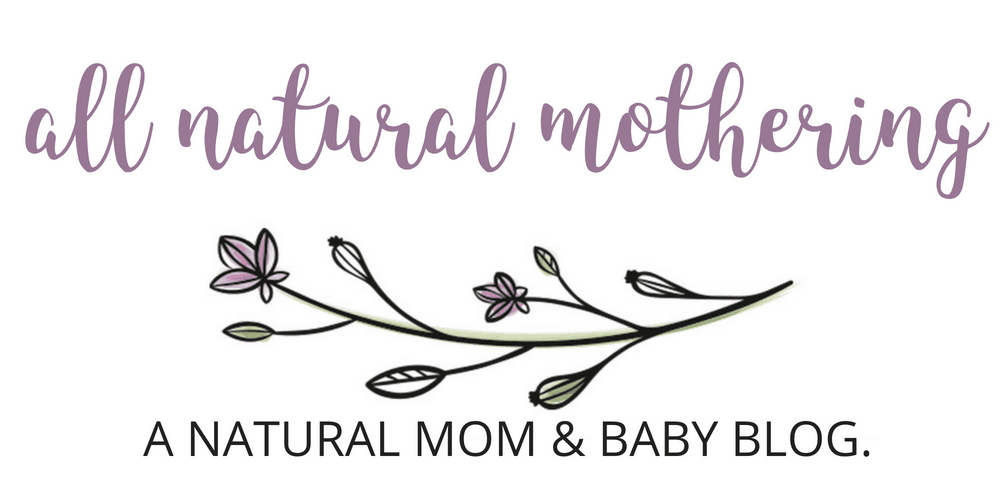
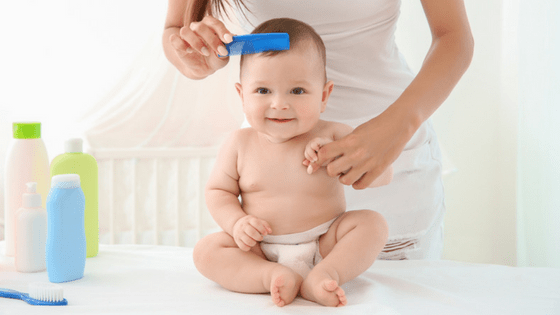





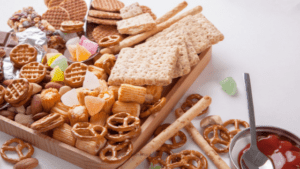
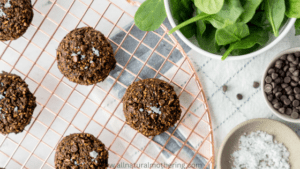


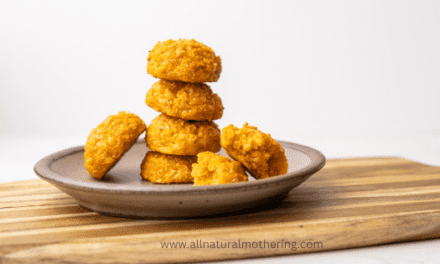

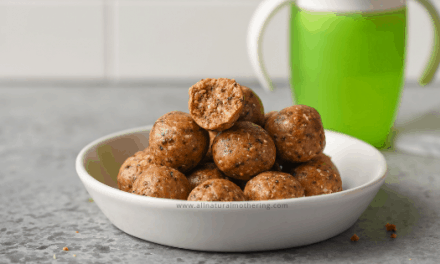


Trackbacks/Pingbacks